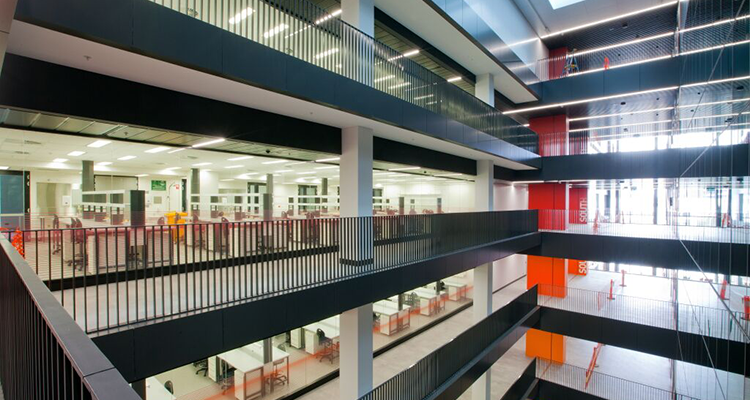
The new flexible and cutting-edge facility will enable UNSW Science and Medicine to pursue collaborations in learning and research.
Biological Sciences stage 2 project (D26) is now complete, marking a major milestone in the development of UNSW’s Biomedical Research Precinct on the Kensington upper campus. The eight-storey refurbished building has been under construction since 2017 and is designed to be flexible, supporting current research and teaching needs as well as providing infrastructure to support future technological advances.
The vision for this project was to enhance interdisciplinary teamwork by bringing together biological and biomedical scientists. It has the capacity for more than 400 PhD students and staff and 450 biological, biomedical and anatomy undergraduate students.
The Dean of Science, Professor Emma Johnston AO, believes the new space will be beneficial to the entire University.
“The new laboratories and facilities in the Biosciences building are state-of-the-art. The open and fluid spaces have purposely been designed to encourage collaboration and the cross-fertilisation of ideas,” she said.
“Not only will our many research groups benefit from this new space, but it will transform the way we teach and how our students learn.”
The refurbished building now connects seamlessly with the E26 Biological Sciences South building.
UNSW Science’s School of Biological, Earth and Environmental Sciences (BEES) and the School of Biotechnology and Biomolecular Sciences (BABS) will benefit from the large flexible first year teaching facilities on ground floor and level one. The labs have an advanced audio-visual system which can display live information and images of laboratory specimens.
“Scientific research today relies heavily upon the use of technology so encouraging students to use technology from the beginning of their scientific career will benefit them in the future,” says Marlene Tsie, Teaching Laboratory Manager at BABS.
On the upper four levels the modern infrastructure in the research laboratories will enable more efficient research. Many studies, such as examining the DNA sequence specificity of anti-cancer agents, will benefit. On level three, a state-of-the-art robotic crystallisation facility and a new x-ray diffractometer allows for the collection of data in faster and new ways and can be operated remotely. The space brings together groups focused on using synthetic biology to design, produce and characterise protein/DNA biomaterials for applications in biotechnology. Students will gain hands-on experience in synthetic biology research.
New laboratories will help the UNSW Recombinant Products Facility by enabling a range of collaborations to drive basic and applied biological research in proteins at UNSW. They want to become a national leader in the fields of protein science, structural and synthetic biology.
UNSW Medicine’s School of Medical Sciences and its Department of Anatomy are also embracing the new building’s capabilities as home of their anatomy laboratories. The Dean of Medicine, Professor Rodney Phillips, believes this will enhance the Faculty’s abilities to integrate clinical work and research.
“The building and its new technologies will transform how we teach anatomy by incorporating cutting-edge technology. The new laboratories support our key research priorities by integrating practical clinical experience, research and education.”
New laboratories will combine traditional cadaveric teaching with new generation technologies like virtual reality and modern visualisation. Students at remote locations will be able to livestream and participate in anatomy classes.
Externally, the building features 189 state-of-the-art solar panels, generating enough energy to power up to eight houses. A new northern entrance opens onto the Michael Birt Gardens with a café scheduled for construction in June.
- Log in to post comments
